Deborah J. Ross's Blog, page 51
April 26, 2020
Look What Arrived!
ARCs of Collaborators appeared on my doorstep! There is a special thrill in holding a physical copy of a new book in one's hands. I love the new cover by Maya Kaathryn Bohnhoff. My daughter peeked over my shoulder as I was opening the box and said, "Oooh, neat cover!"
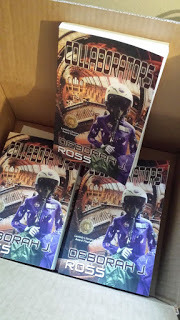
It's available now for pre-order in ebook and print formats from Amazon, Barnes and Noble, Kobo , and other ebook vendors. Your local bookstore can order print copies from Ingram. It will be available through Overdrive, so you may be able to borrow it from your public library, as well.

It's available now for pre-order in ebook and print formats from Amazon, Barnes and Noble, Kobo , and other ebook vendors. Your local bookstore can order print copies from Ingram. It will be available through Overdrive, so you may be able to borrow it from your public library, as well.

Published on April 26, 2020 01:00
April 25, 2020
Here's my latest newsletter. Please subscribe here!Newsle...
Here's my latest newsletter. Please subscribe here!
Newsletter: April #StayHomeAndRead Goodies
 Stories Help Us Through Tough TimesWhether you are an essential worker, coping with added stress but determined to play your part, a student taking classes remotely, a retired person whose income may be secure but who is at high risk, an unemployed or furloughed worker, or a small business owner forced to close up shop, the pandemic takes a toll on all of us. I wish from the bottom of my heart that I could wave a magic author's wand and keep you and your loved ones safe in all senses of the word. Alas, not even on Darkover is that possible. Nevertheless, I hope the items in this newsletter help to brighten your day.
Stories Help Us Through Tough TimesWhether you are an essential worker, coping with added stress but determined to play your part, a student taking classes remotely, a retired person whose income may be secure but who is at high risk, an unemployed or furloughed worker, or a small business owner forced to close up shop, the pandemic takes a toll on all of us. I wish from the bottom of my heart that I could wave a magic author's wand and keep you and your loved ones safe in all senses of the word. Alas, not even on Darkover is that possible. Nevertheless, I hope the items in this newsletter help to brighten your day.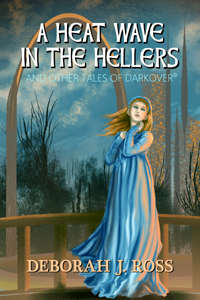 #StayHomeAndRead
#StayHomeAndReadI've reduced the prices of my indie ebooks to make them more available to my readers. A Heat Wave in the Hellers, and Other Tales of Darkover and Other Worlds: Early Novels are $2.99, and everything else* is $0.99. You can find them at Amazon, Barnes and Noble, and other vendors. (This doesn't apply to my traditionally published books, as the publisher sets the price, but the anthologies I've edited for the Marion Zimmer Bradley Trust -- Lace and Blade, and the Darkover anthologies, for example, are reduced in price, too.)
*Jaydium, Northlight, Azkhantian Tales, Transfusion and Other Tales of Hope, Pearls of Fire, Dreams of Steel, and Ink Dance: Essays on the Writing Life.
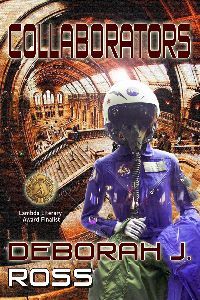
Collaborators has a release date, October 1, 2020, in both ebook and print. It's now available for pre-order from Amazon, Barnes and Noble, Kobo , and other ebook vendors. (The print edition from Amazon won't go live until then, but B & N allows pre-order for both editions.) Your local bookstore can also order print copies from Ingram. It will be available through Overdrive, so you may be able to borrow it from your public library, as well.
If you enjoyed it, please post a review!
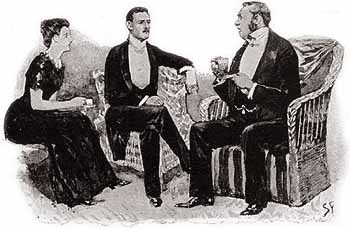 Radio Interview!
Radio Interview!On April 21, 2020, I was interviewed on the British radio station, Chat and Spin. Here's the link to the program. My interview begins 1 hour 37 minutes into the program. I've been invited back for June, so stay tuned!
I've been posting more stories to Curious Fictions. The first few chapters of Jaydium are up and are free. You can subscribe to me for only a few dollars a month and read everything free that way.
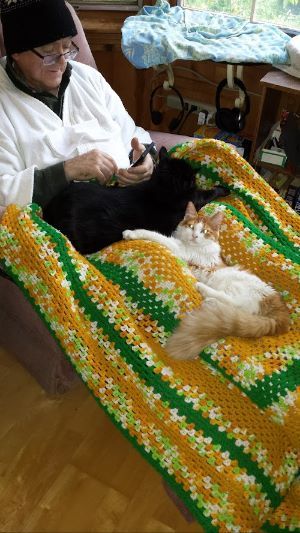 Kitten pics!
Kitten pics!Here are Shakir and Sonja, curled up with my husband on a chilly morning. Shakir is about twice Sonja's size, but that does not stop her from inserting herself into wherever she wishes to be. She's been known to curl up on top (literally, not beside but on top) of him. He is totally indulgent with her. Considering that when she was first introduced to him as a kitten, she threw herself on her back and screamed, and is now bossing him around mercilessly, we consider this great progress. Snippet from Arilinn
Neave stood in the middle of the fourth floor attic, hands on hips, and regarded her sisters. At the moment, she found it a struggle to not regard them as outsiders, interlopers in this space that had always been her personal sanctuary. Not even the maids ventured into this part of the topmost storey, amongst the broken furniture, the crates and barrels of cracked, mismatched crockery, parchments so worn they couldn’t be used again but which no one had thought to discard, and the battered chests, wood and age-hardened leather, filled with unrepairable clothing and toys and bits of metal. None of the locks worked. It was dangerous to perch on some of the chairs. Billows of dust rose up whenever she opened or moved anything. But this attic had been hers since childhood, a refuge during the difficult years after her father’s remarriage. It was also the one place no one had ever thought to look for her.Of her three half-sisters, she felt the closest to Leora. She and Jessamy had never had a chance to become friends, let alone loving sisters, in part due to differences in temperament and in part due to Domna Graciela’s obnoxiously evident preference for her own firstborn. By the time the next babe had died at a year’s age of a lung fever and Leora had come along, Neave had become more independent and less needy of a mother’s love. There had been no reason to waste time on overtures that would either be thwarted by her stepmother or rebuffed scornfully by Jessamy herself.Neave had been surprised and not a little pleased when she’d felt the stirrings of Leora’s laran, and how strong and wild it was. She had not been able to resist the memory-enhancement technique she’d been shown during her last visit to Alcabra Keep. Of course, she wasn’t supposed to practice it unsupervised, but she’d been unable to resist. And it had paid off, not just in terms of information, although dubiously useful information, but the delight of the intimate contact with a sympathetic mind.As for Sharina… Neave frowned. The question regarding Sharina came down to whether a child so mercurial in temperament could be trusted to keep anything secret, and whether the girl ought to be sent back to her own room before anything of significance was said. Right now, Sharina was projecting defiance, and Leora practically quivered with excitement and curiosity mixed with trust. As for Jessamy, her facial expression was unreadable, but her mind churned with such suspicion and jealousy that it was impossible to tell what she was thinking.“Now, then,” Neave said. “What’s all the hubbub about?”“The cattle raid,” Jessamy said at the same time as Leora burst out with, “Lord Carcosse’s dastardly plot!”“What cattle raid?” Sharina asked. “What plot?”“The one you’re not supposed to know about?” Neave said. “But that now everyone does?”“Oh, that cattle raid,” Sharina said with an attempt at carelessness.“It’s got to be a trap,” Leora said. “With what Jessamy says —”“What trap?” Sharinda squeaked.“It’s a pretext for an attack —” Jessamy said.“What trap?” Sharinda wailed.“Stop, all of you,” Neave said, using a touch of laran to emphasize her point without having to raise her voice. The others quieted instantly. Leora shot her a sharp look, as if she’d just been pinched. She’d clearly felt the psychic nudge.Neave opened her mouth to set them all straight, and then thought better of it. In a short time, they’d be on their own, not that any of them had previously paid much heed to her or she to them. It wouldn’t help them to be told what to think of these particular rumors and half-truths flying about the castle. The problem wasn’t whether Lord Carcosse’s complaint about a hypothetical cattle raid was or was not a trap, it was how her sisters had been kept ignorant and insignificant, their talents not worth developing. No wonder they invented stories and became rivals for the attention of anyone who knew anything.


 Copyright © 2020 Deborah J. Ross, All rights reserved.
Copyright © 2020 Deborah J. Ross, All rights reserved. Want to change how you receive these emails?
You can update your preferences or unsubscribe from this list.


Published on April 25, 2020 01:00
April 24, 2020
Short Book Reviews: Imagination Takes on Faerie
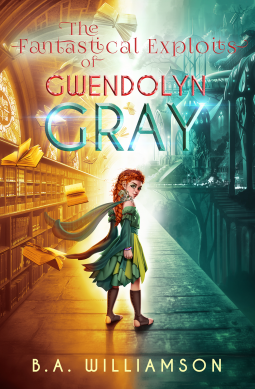 The Fantastical Exploits of Gwendolyn Gray (Book 2), by B. A. Williamson (Jolly Fish Press)
The Fantastical Exploits of Gwendolyn Gray (Book 2), by B. A. Williamson (Jolly Fish Press)I first had the pleasure of meeting Gwendolyn Gray in her Marvelous Adventures (of GG). I write and mostly read YA and adult fantasy and science fiction, but I had recently delved into reading Middle Grade. To my delight I found that literature for this age group has all the adventure and self-discovery I love, plus a simplicity and directness that adds depth and honesty. Yep, honesty. Kids this age are hard, if not impossible, to fool when it comes to emotional truth. They’re old enough to have attained a considerable degree of agency in their own lives, which connects them with characters, but young enough to not yet be smothered in hormonal angst. The best Middle Grade books trusttheir young readers to figure out what’s going on and how they feel about it. I love that! I should also add that no matter what the target audience, the most powerful ideas are best communicated in simple, direct language. Nowhere is that more true than in Middle Grade.
So, to Gwendolyn. When I first met her, she was a flame of color and imagination in a city of unrelenting conformity. Specifically, she lived in a City – the one and only City – where everything is gray and monotonous, literally as well as chromatically, and where children and adults alike spend the better part of their lives under the control of soporific lights called “lambents.” What distinguishes Gwendolyn, besides her delicious name, is her imagination, which is so vivid as to constitute a superpower. In that first book, she battled the Faceless Mister Men, traveled across worlds with her maybe-not-imaginary friends, Sparrow and Starling, rescues a snarky teenage pirate king, saved the City from the vile Abscess, and destroyed the lambents.
Of course, the resulting good times cannot last,
Gwendolyn’s Fantastical Exploits are just as dramatic and entertaining as her Marvelous Adventures. Perhaps a bit more so, when she finds her own story in the Library, and when she must reflect on how the things that make her extraordinary have set her apart from her City and created a lingering sense of unworthiness. For young people trying to figure out who they are in their own world, and who they want to become, nothing could be more resonant.
Gwendolyn and her friends came along long after my own children were grown up, but I hope we are never too “mature” for a rollicking good story that leaves a sweet yet thoughtful afterglow long after the last page is turned.

Published on April 24, 2020 01:00
April 20, 2020
Author Interview: Tara Gilboy
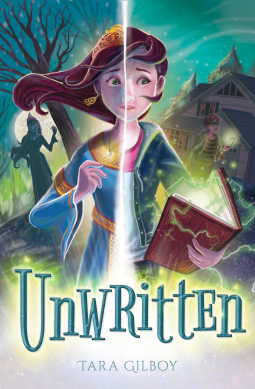 Please welcome Tara Gilboy, author of the Middle Grade adventures, Unwritten and Rewritten.
Please welcome Tara Gilboy, author of the Middle Grade adventures, Unwritten and Rewritten.
Deborah J. Ross: Tell us a little about yourself. How did you come to be a writer?
Tara Gilboy: I am, first and foremost, a reader. Books and stories have always been one of the most important things in my life, and I’ve wanted to write pretty much since I learned to read. I still have some of the stories I wrote in elementary school. My mom recently gave me a letter I wrote to a publisher when I was in third grade, asking if I could write books for their series. (Apparently she never mailed it!) Unfortunately, until I was in my twenties, I had never actually met a writer, and so writing started to seem like this kind of “impossible dream.” Then in college, I took some creative writing classes, published a couple short stories, and worked as an editor at a literary journal, and I realized: “Hey, I can really do this!” I completed my MFA in creative writing at the University of British Columbia, which ended up being very humbling and also one of the most formative experiences of my writing life.
DJR: What led you to write MG and how is it different from YA or adult fantasy?TG: Even though I have always loved children’s books and read tons of middle grade (and actually my first ventures into writing were always in middle grade, which is what I wrote for fun), when I was in college and started seriously pursuing writing, I focused on adult fiction. I am embarrassed to admit that I was a bit of a literary snob, and I had these really pretentious ideas about writing. My sense of story was virtually nonexistent, I sneered at plot, and I was writing a lot of “purple prose,” these kind of overwritten sentences, way too much description and exposition. But a lot of my stories left me feeling cold. I wasn’t in love with the stories and characters. I remember in my first year of my MFA at UBC, I was taking a novel-writing workshop and working on an adult novel that was this really serious historical piece about a marriage and a woman finding herself within her marriage. I was really struggling with it and couldn’t wait for the workshop to be over so I never had to look at the novel again. At the same time, I was taking a class on writing children’s books and reading all these amazing middle grade novels and having wonderful class discussions about them, and I realized that I was happiest when I was writing these kinds of stories. At the end of the first year, I changed my thesis genre and never looked back.
I think middle grade differs from adult fantasy (and to some extent, YA), in that it is really condensed into its essential elements – there is no room to digress or go off on tangents or you risk losing your reader. Middle grade readers have great eyes for what actually needs to be there in the text, and when I am writing middle grade, I am ruthless about cutting. I am also very careful about structure and pacing when I am revising. I want to keep the reader turning pages without making things feel too rushed. The focus is always on telling a good story, which is what I love so much about these books. I also think middle grade tends to look inward, where characters really make sense of their own identities, who they are, whereas in YA, the books tend to look outward, with the main characters finding their place in the world, which makes sense, since YA readers are often on the cusp of leaving home in just a few short years.
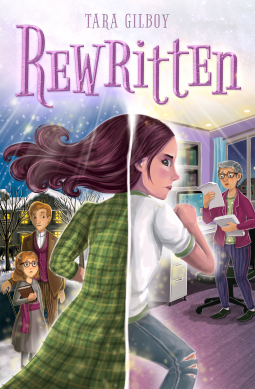 DJR: What inspired your book, Unwritten? How do you see it in relation to current MG?TG: Unwritten started in a rather unusual way. I had written a different book for my MFA thesis, and I found an agent for it pretty quickly, so I really had my hopes up when it went out on submission, and then …. Nothing. It didn’t sell. This shook my confidence as a writer, and I was starting and stopping a lot of projects and feeling insecure about my writing. Finally I decided to write something just for fun, something that was just for me, that I never planned on showing anyone, as a way to make writing fun for myself again. Unwritten was my “just for fun” project.
DJR: What inspired your book, Unwritten? How do you see it in relation to current MG?TG: Unwritten started in a rather unusual way. I had written a different book for my MFA thesis, and I found an agent for it pretty quickly, so I really had my hopes up when it went out on submission, and then …. Nothing. It didn’t sell. This shook my confidence as a writer, and I was starting and stopping a lot of projects and feeling insecure about my writing. Finally I decided to write something just for fun, something that was just for me, that I never planned on showing anyone, as a way to make writing fun for myself again. Unwritten was my “just for fun” project.At the same time, I kept having this recurring nightmare where some sort of supernatural entity was coming after me, and I had to pack up whatever I could fit into my car and run away forever. That dream was initially my starting point in the story; in the early drafts, the story opened with a stranger arriving in the middle of the night and telling Gracie and her mother that they have to flee. (I think my original opening line was “The pounding shook the house” as this stranger knocks on the door.) Later, as I continued working on the novel, I realized that in order for readers to feel invested in that moment, they needed to know more about Gracie first, so the scene got pushed back into what I think is now chapter four or five, and it eventually evolved into something completely different. But the origin of this story was me exploring who Gracie was running from and why, as well as giving myself permission to play around with these ideas without pressuring myself to write something with the end goal of publication in mind. I think because of the premise of the book, people often assume I must have started with the “story-within-a-story” idea, but that actually wasn’t the case.
There is so much wonderful middle grade coming out right now, so much of it turning inward to explore themes like identity and where we belong within our families and friendship groups. I think Unwrittenfits within current MG in that it really focuses on Gracie’s inner journey as she figures out (quite literally) who she is, where she comes from, who she will be going forward. Though her situation is unusual, the universal emotions she explores are ones that recur frequently in middle grade because they are so important to this age group (and to all readers).
DJR: What authors have most influenced your writing? What about them do you find inspiring? TG: I think this answer varies depending on the project I am working on. With every project I write, I always have a set of “mentor texts,” books that may be similar in style or theme or premise to the one I am undertaking, and I study them closely to examine what worked well in these books and how the authors handled different issues that I may be struggling with. When I was writing Unwritten, I read every book with a “story within a story” and characters coming to life that I could get my hands on (they were surprisingly hard to find!). For the project I’m working on now, which has some gothic elements, I’ve been reading classics like Bram Stoker’s Dracula and Mary Shelley’s Frankenstein as well as middle grade books with gothic undertones like Laura Amy Schlitz’s Splendors and Glooms and Jonathan Auxier’s The Night Gardener. For overall influence, though, JK Rowling and Kate DiCamillo have been big influences on me. Their books have this lovely classic feel to them, in the language, in the sense of wonder, in the magic.
DJR: Why do you write what you do, and how does your work differ from others in your genre?TG: I never thought I’d be a fantasy writer. When I was in elementary school, I was fascinated by historical fiction. I read Laura Ingalls Wilder’s Little House books over and over again, as well as Frances Hodgson Burnett’s A Little Princess, and if a book had pioneers in it, it was for me. I love learning about history (Colonial Williamsburg is my absolute favorite place in the world!), and so when I first began writing for children, I assumed that I would write historical fiction. I started and stopped many, many historical fiction projects, but I kept petering out in the middle. I’d stall in the researching phase, or I’d freeze if I couldn’t get a detail right, or I simply would get stuck devising a plot. Writing was beginning to feel like “work” for me, but I was reading a lot of fantasy at the time, and so I started playing around with writing some. I loved the fun and freedom and magic of asking myself these completely off-the-wall “what if?” questions and then exploring how I could possibly pull them off in a story. What if a doll was alive? What if a girl was really a storybook character? What if I could travel in time? They were the kinds of questions I realized I had been asking myself and daydreaming about ever since I was a little girl, the kinds of questions we all ask ourselves as children when we have this enormous capacity for curiosity and wonder. I think that’s what draws me to fantasy. The story possibilities are endless, and I never struggle to find ideas the way I did when I was writing historical or contemporary realistic fiction.
I’m not really sure how my work differs from others in my genre. I tend to write fantasy rooted in reality, rather than high fantasy where there is so much world-building involved. I deeply admire writers who can create these wonderful magical worlds (JK Rowling immediately comes to mind), but I’ve always written about worlds very similar to our own, with just a few magical elements.
DJR: How does your writing process work?TG: I am a huge fan of Anne Lamotte and swear by her “sh---y rough draft” advice. My first drafts are the biggest piles of garbage you’ve ever seen, and I am always secretly terrified that someone is going to see them before I have a chance to revise and think “wow, she’s a terrible writer.” I play around A LOT when I am writing, and my first drafts are all about exploring my plot and characters and letting them take the story in different directions rather than trying to stick to a rigid outline. Once I start getting further into the story, and have a solid fifty pages or so, I start to do a bit more outlining, but usually it’s only a brief list of the next few scenes and what needs to happen in each. I may have a general idea of where the book is headed, but when I try to force a book to end a certain way, things start to unravel pretty quickly because my characters’ actions don’t feel natural to them. Anne Lamotte writes in Bird by Birdabout an E.L. Doctorow quote: “'Writing a novel is like driving a car at night. You can see only as far as your headlights, but you can make the whole trip that way.' You don't have to see where you're going, you don't have to see your destination or everything you will pass along the way. You just have to see two or three feet ahead of you.” That’s pretty much how I write. And I always start my writing day by reading for half an hour or so of a book I love. It’s the only way I can get into the right frame of mind to write.
DJR: What have you written recently? What lies ahead?TG: When I finished Unwritten, I went through a long stretch of time where I was starting and stopping projects and not being able to stick with any one story. I worked on a ghost story about a haunted doll, nonfiction, some picture books, a historical fiction about pirates, science fiction set in the near future, and a middle grade about a mermaid. I may return to some of these projects at one point, but none of them were really holding my attention the way they needed to: I was drifting and feeling a bit lost. I am now halfway through the first draft of a book I am really excited about. It’s a fantasy, and it has a lot of gothic elements. I am having a lot of fun playing around with the creepy setting and gothic tropes.
DJR: What advice would you give an aspiring writer?TG: Find a workshop group full of people you trust. It will be your most valuable asset as a writer. They should love your work but also push you to make it better. I have a very difficult time developing a revision plan on my own, and my critique partners are always helping me, by closely reading my work, suggesting what needs to change, and also helping me find the “gems” in my stories – the best parts that I can flesh out more and bring to the forefront. The people in my workshop group have become some of my dearest friends, and we are always cheering one another on, commiserating one another on failures, and chatting for hours about storytelling. They are the best! I don’t think I could have written this book without their support. It can be tough to find the right workshop group, though. My number one rule is this: you should always leave a workshop session feeling energized and excited to get to work on your revisions. If you feel dispirited and discouraged, something may be off about the dynamic of the group. They shouldn’t be giving only praise, but they should definitely be telling you what you are doing WELL along with what needs to change. And that’s not just because of ego or hurt feelings. There is no way a writer can successfully revise without being aware of what parts work well and resonate with readers. Those are the parts we want to expand on and strengthen.
Middle Grade author Tara Gilboy holds a Master of Fine Arts in Creative Writing from the University of British Columbia, where she specialized in writing for children and young adults. She teaches creative writing in San Diego Community College's Continuing Education Program and for the PEN Writers in Prisons Program.
*You can order signed copies through Mysterious Galaxy: https://www.mystgalaxy.com/book/9781631631771Otherwise, it's also available at Amazon https://www.amazon.com/Unwritten-Tara-Gilboy/dp/1631631772
and Barnes and Noble: https://www.barnesandnoble.com/w/unwritten-tara-gilboy/1128015977

Published on April 20, 2020 01:00
April 18, 2020
Curious Fictions: Jaydium, Chapter 2 by Deborah J. Ross
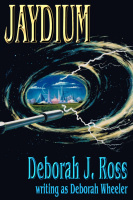 The next chapter of Jaydium is up (and free!) on Curious Fictions. The first chapter is also free.
The next chapter of Jaydium is up (and free!) on Curious Fictions. The first chapter is also free.Curious Fictions: Jaydium, Chapter 2 by Deborah J. Ross
Can't wait to see what happens next? The ebook edition is available for only $0.99 (special #StayHomeAndRead price) at Amazon, Barnes & Noble, Google Play, Kobo, and other outlets.

Published on April 18, 2020 01:00
April 17, 2020
Short Book Reviews: Dramatic Conclusion to Tim Pratt's Axiom Series
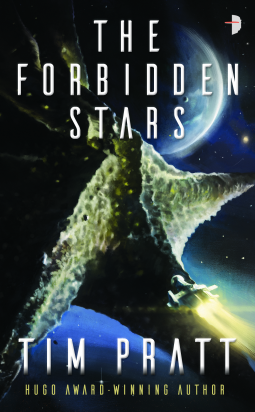 The Forbidden Stars (Book III of the Axiom), by Tim Pratt (Angry Robot)
The Forbidden Stars (Book III of the Axiom), by Tim Pratt (Angry Robot)It’s always a risk to jump into a series or a multi-volume story, like this one, and in general I don’t recommend it. It takes great skill on the author’s part to bring a new reader up to speed without boring those who already know the backstory. When I asked for a review copy of The Forbidden Stars, I assumed it was a direct sequel to The Wrong Stars. Wrong (excuse the pun) book, though. However, since I loved The Wrong Stars, I decided to take a chance. After a little coming-up-to-speed, I found myself immersed in the plot, getting re-acquainted with my favorite characters, and thoroughly enjoying the tale.
Having expanded across the galaxy, humanity considers its future bright. Sure, there are occasional territorial clashes, and aliens called Liars because of their obsessive duplicity. But when, in the first book, Captain Callie Machedo and her crew discover an artifact of an unknown, possibly extinct or unimaginably ancient alien race, the Liars react with horror. Humans are now on the brink of making contact with the long-dormant, genocidal race, the Axiom. The Axiom’s reaction when it contacts another sapient race is to destroy it, and they have technology beyond anything humans have achieved to do it. There is nowhere in the galaxy beyond their reach, and no species has ever survived first contact, except the Liars, their client race.
Now, in the third book, Callie and her crew, aided by their mysterious client, the Benefactor, are determined to bring the battle to the Axiom.
And we get to go along for the ride.
What a ride it is, full of plots and schemes and danger, and most of all, the resourcefulness and devious craft of our heroes. It’s such a joy to have a highly competent, terrifyingly intelligent protagonist as Callie. I kept expecting her bravado to land her in a mess over her head, but that didn’t happen. The result was no less dramatic but endlessly fascinating.

Published on April 17, 2020 01:00
April 15, 2020
Today's Moment of Art
Published on April 15, 2020 01:00
April 10, 2020
Short Book Reviews: A Middle Grade Heroine Takes on Gothic Horror
 Rewritten (Unwritten series, book two), by Tara Gilboy (Jolly Fish Press)
Rewritten (Unwritten series, book two), by Tara Gilboy (Jolly Fish Press)Gracie, a preteen whose life has been spent in hiding, has come to terms with having been created as a villainous character in a book written by Gertrude Winters. Her life is marginally better after the adventures in Unwritten (reviewed here), since she and her best friend, Thomas, along with various other people, are squashed into Gertrude’s house. Not only that, the archvillain, Cassandra, is still at large, armed with the magical book, the Vademecum, which allows her to travel between real and literary worlds. Cassandra is no less obsessed with Gracie as her heir and adopted daughter. And now she’s using the Vademecum to track Gracie’s every thought and movement.
Meanwhile, Gracie stumbles on a box of Gertrude’s unpublished stories, tales in which the writer worked out her troubled relationship with her own daughter. Some are benign, like the one set on a cruise ship, but one was so dark, so filled with danger and gloom, that Gertrude refused to allow Gracie to read it. And it is into this Gothic horror story that Gracie and Thomas flee, with Cassandra on their heels.
The world of The Beast of Blackwood Hall is a parade of Gothic tropes: the isolated manor house, the wintry forest, the mysterious disappearances and even more mysterious illness; the newly deceased mother; the family curse; the monster that lurks in the shadows. All of these are intensified by the limitations that the story itself places on Gracie and Thomas, for they cannot escape beyond the confines of the story, which is inexorably drawing to its fatal climax.
As with the first book, Unwritten, Gilboy’s tale offers much to the adult as well as the middle grade reader. The issues are not watered down or simplistic. She never condescends to her young audience. Rather, she trusts them to understand complex emotions, and that is perhaps the most compelling aspect of these books. Children become trustworthy by being trusted; they grow into emotionally mature adults by being presented with ambiguity and nuance.
Gracie . . . thought back to her conversations with Gertrude. “She said the monster was a metaphor for something, the dark parts of ourselves.” . . . She’d written the stories the way she had to avoid hurting real people, to put all her feelings onto the page, rather than lashing out at those she loved.
“Every story we read becomes a part of who we are in a small way.”
Gilboy’s stories definitely fall into that category.

Published on April 10, 2020 01:00
April 8, 2020
Today's Moment of Parakeets
Published on April 08, 2020 01:00
April 7, 2020
Very Short Book Reviews: A New "Wayward Children" Novella
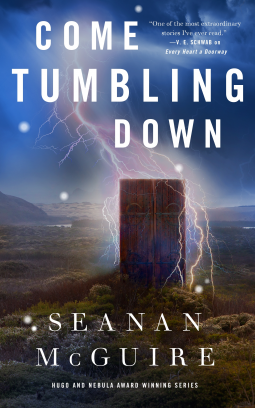 Come Tumbling Down, by Seanan McGuire (Tor.com)
Come Tumbling Down, by Seanan McGuire (Tor.com)In this latest installment of the “Eleanor West’s School for Wayward Children” series (the first book of which was the stunning, award-winning Every Heart A Doorway), Jack (of Jack and Jill) returns from the world of the Moors, a lightning-ridden nightmare cross between Frankenstein and Dracula, with an occasional Lovecraftian Drowned God. Only Jack isn’t herself, she’s been placed into Jill’s body, and therein lies the problem, because although the two are identical twins, their personalities could not be more dissimilar. Faced with unacceptable, revolting differences, Jack’s OCD threatens to overwhelm her self-control. Now Jack’s on a mission back to the Moors to regain her own body and save her mentor, Dr. Bleak. Accompanying her are her lover, Alexis, the girl with lightning instead of a heart, and her friends from the school, Kade, Sumi, Christopher, and the mermaid girl, Cora.
Come Tumbling Down is a worthy, brilliant successor to the previous volumes, full of luscious prose, sentences that ring so emotionally true they stop your heart, and immense generosity.

Published on April 07, 2020 01:00







